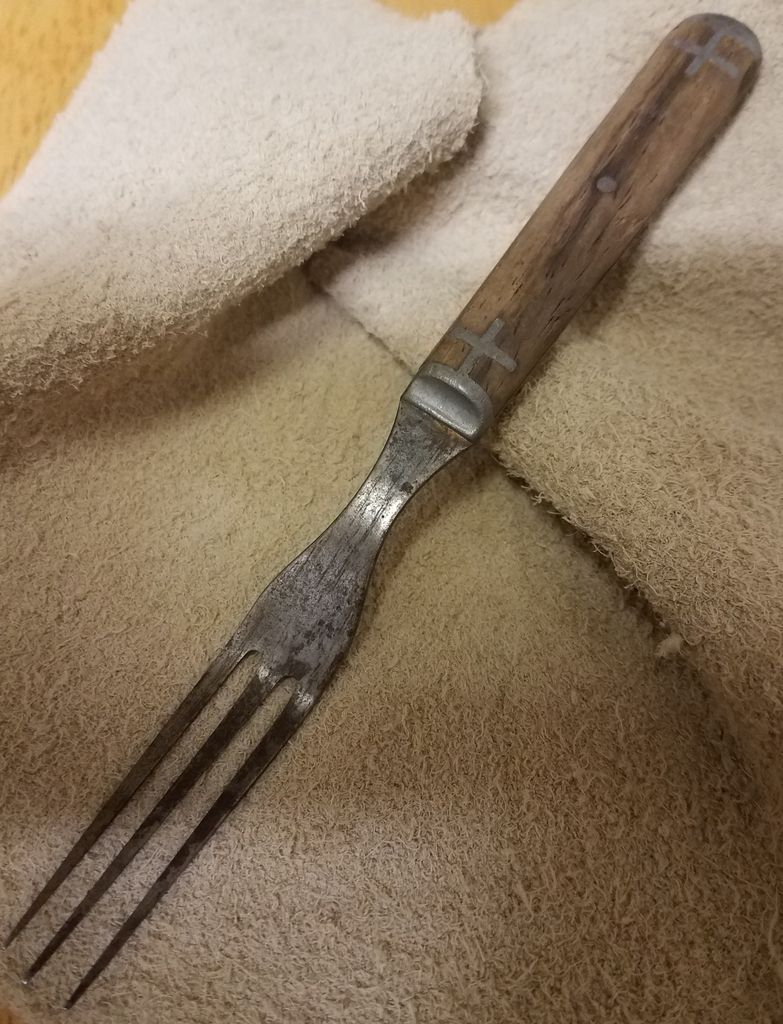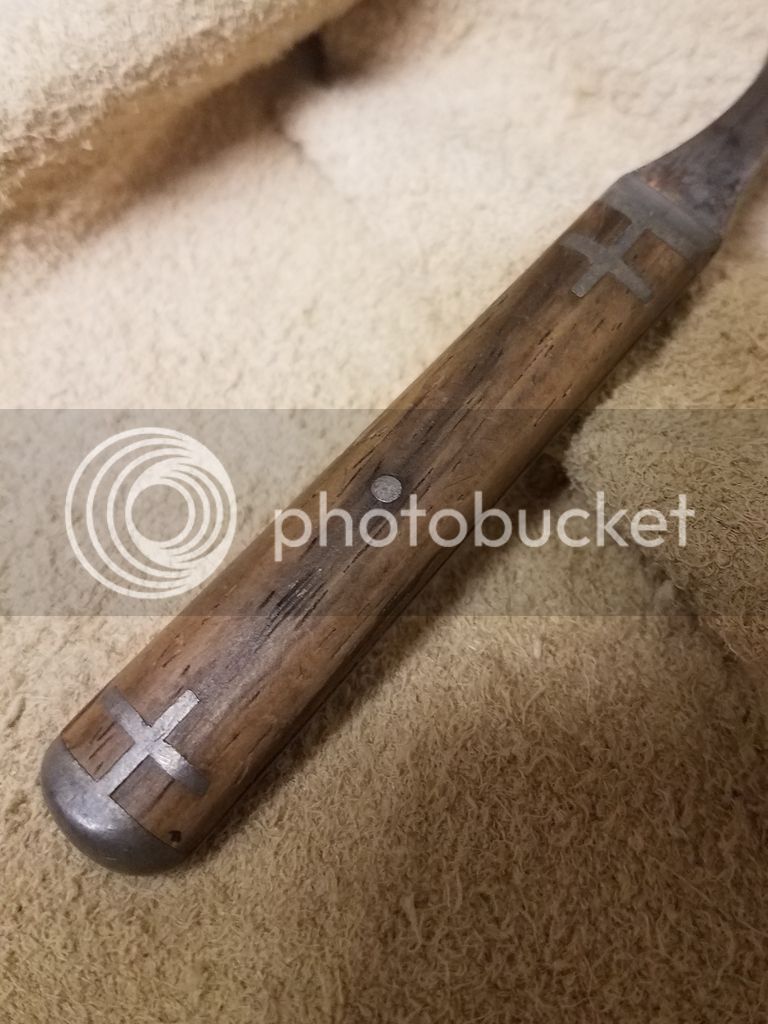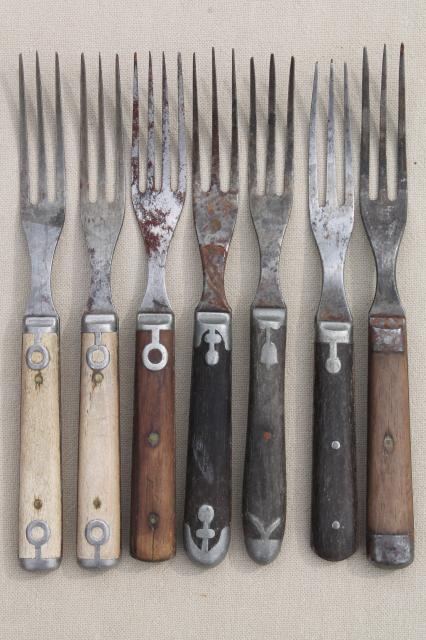Been in the family for awhile and remember seeing it at my grandmother's house as a child. My mother passed it on my way yesterday and obviously was tickled to death. Best I can find is early 1800's?
Walnut scales, single iron pin and poured pewter decorative designs. Beautiful little fork! It's the lite trinkets such as this that spark excitement and curiosity on it's past.


Walnut scales, single iron pin and poured pewter decorative designs. Beautiful little fork! It's the lite trinkets such as this that spark excitement and curiosity on it's past.









